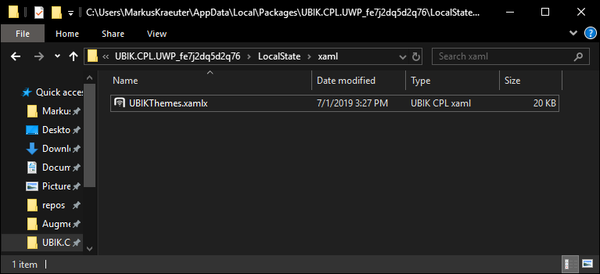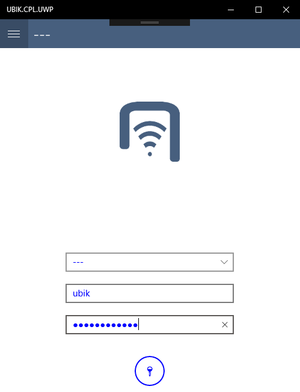The User Interface of the Xamarin Clients (Android, iOS, new UWP) can be fundamentally customized using custom XAML definitions. This customization process is heavily influenced by the XAML Customization Process on the WinX Client.
Basics
There are predefined XAML templates available that can be overridden. If no override is found, the default template will be used.
Overrides need to be placed in the following folder:
[App Installation Path]/LocalState/xaml/ (on Windows)
The overrides will be loaded during the startup of the app.
UBIKThemes.xamlx
One of the most significant files is the UBIKThemes.xamlx, as it is the place to override and extend global definitions. Definitions and changes made here will reflect over all pages and subpages of the app.
Overriding Styles
In the following, we're going to override the Foreground Color of the program:
- Download the following file: UBIKThemes.zip
- Unzip it and place it into the xaml folder.
- Open it with the text editor of your choice and add the following definition:
<Color x:Key="UBIKForegroundThemeColor">blue</Color>
- Save the changes and restart UBIK. You should see changes successfully implemented:
On other systems (Android, iOS, etc.), you can use the Import Customizing button in the Settings to import the styles (file by file, for now). The app needs to be restarted after the files have been imported.
Custom Pages
Custom pages can be added, just like on the WinX client. However, all namespace definitions need to be added at the beginning of the file, otherwise, the custom page will not load.
Differences to WinX
The biggest difference is that developers don't need to copy the whole UBIKThemes.xamlx file just to edit a few styles. Just the changes from the default styles (soon to be available on the [Release Portal] need to be defined in the overwritten file!
- Namespace definitions have to be included in all files.
- Because the same styles are used on different devices (mobile phones, PCs, tablets), responsive user interfaces should be designed.

